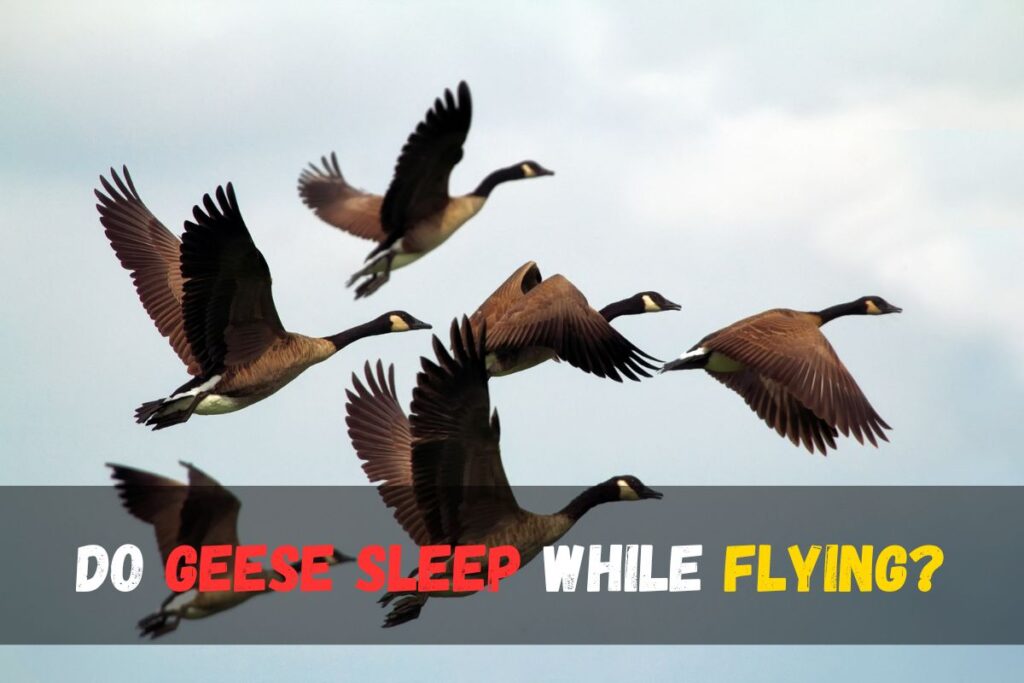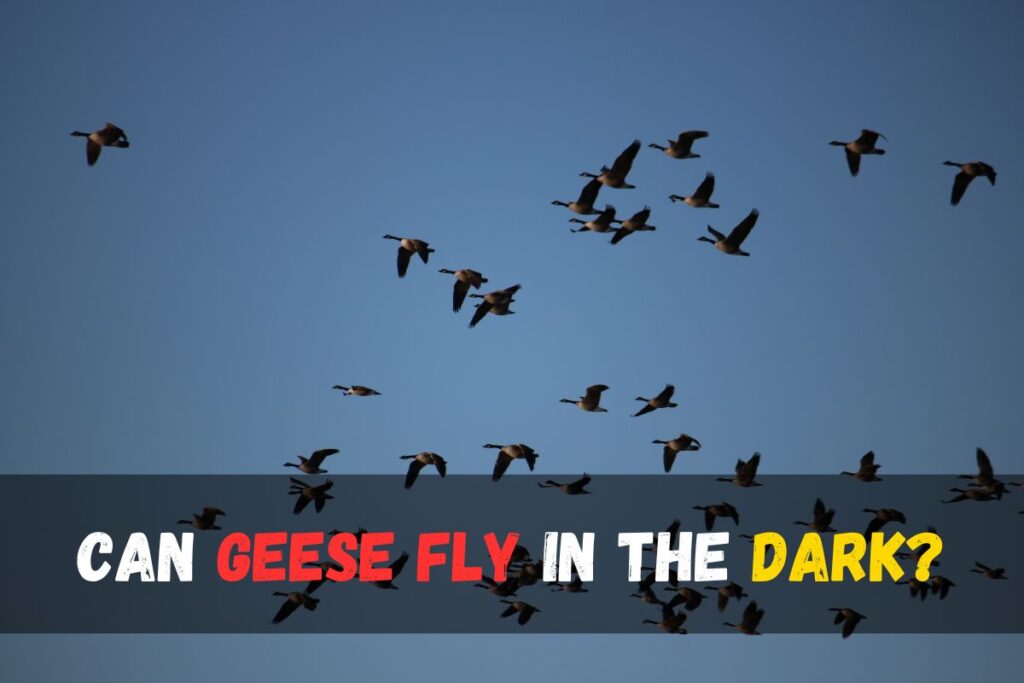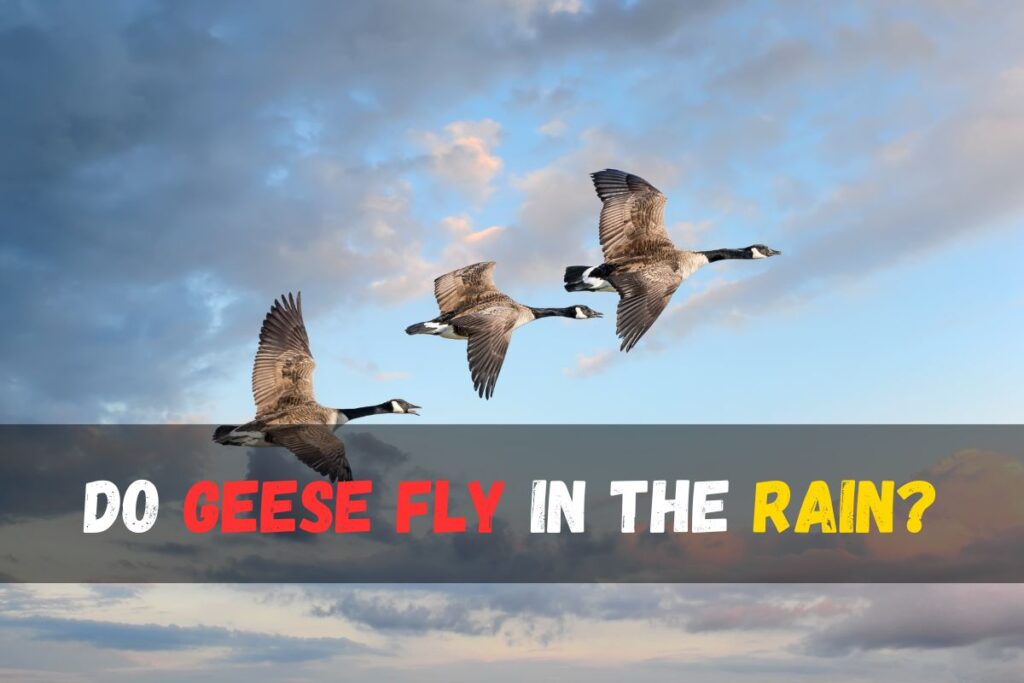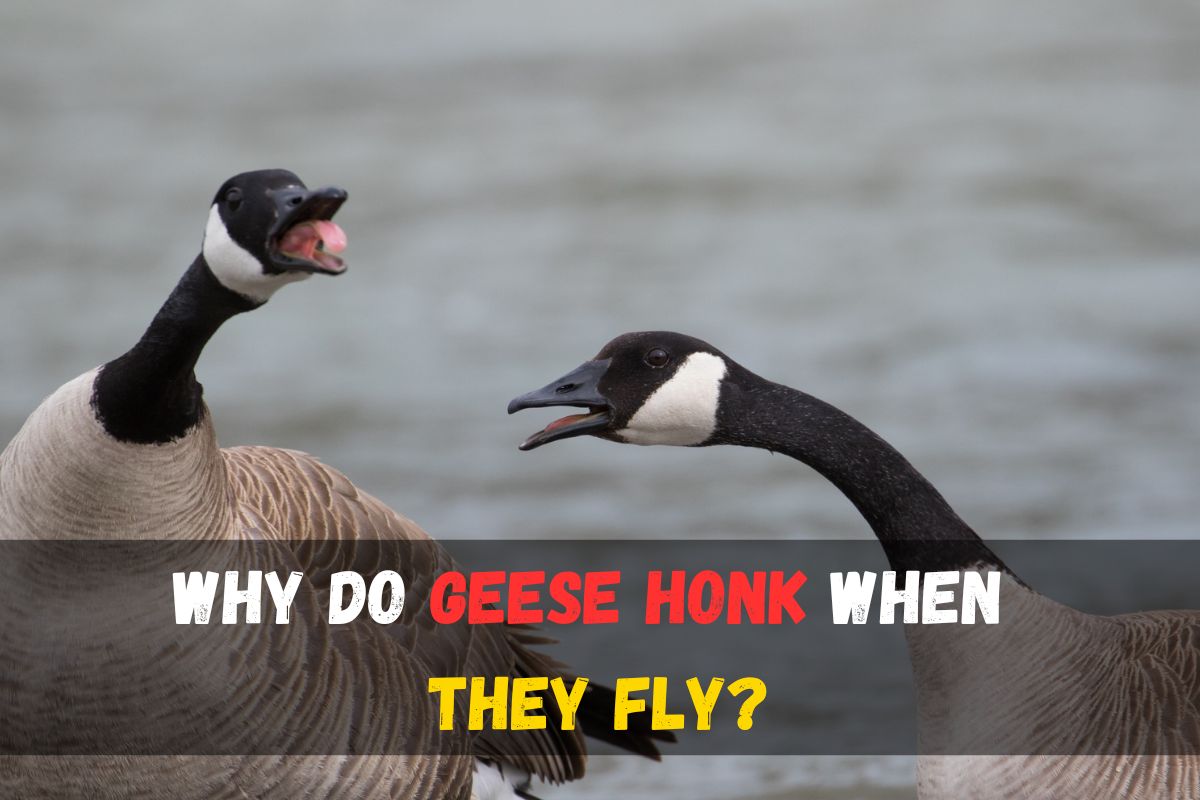When geese take to the skies, their synchronized flight in V shapes is a striking spectacle that has captivated the curiosity of many. But have you ever wondered why geese honk when they fly? This fascinating phenomenon is rooted in a sophisticated system of communication and coordination among these birds.
In flight, geese form a flock, coming together to migrate in a V-shaped formation. This formation not only aids in reducing wind resistance, making their flight more efficient but also provides a remarkable display of teamwork and motivation within the avian world. The geese’s honks during flight serve as an essential component of this coordination. These flight calls are not mere noise; they play a crucial role in maintaining the integrity of the V formation and the speed of their journey.
Why Do Geese Hiss secret behind this ?
Geese honking while in flight are not just noisy creatures; their communication is vital for the entire flock. The honking serves to encourage and motivate fellow geese, fostering a sense of teamwork that is integral to their success. The feedback provided through these calls is akin to a vocal guide, helping the flock adjust its flight form and maintain the optimal energy balance during their long migratory journeys.
The importance of this noisy communication becomes evident when you consider the challenges geese face during their flights. The ever-changing weather conditions, obstacles in their path, and the need to navigate vast distances make their honking a fundamental part of their communication strategy. It enables them to focalize their efforts, stay organized, and ensure their flight form remains intact.
When Do Geese Mate?
8 reasons why geese honk when they fly
Keep Focus
Geese honk when they fly primarily to maintain their formation and focus during long flights. The flying V shape, adopted by geese, is essential for the flock to save energy as they fly, as it reduces wind resistance. Each goose flies slightly higher than the one behind them, allowing the flock to navigate through the air with greater ease.
The honking serves as a means of communication within the flock. If a goose isn’t keeping to this formation, it will receive feedback from the other geese in the form of honking. This feedback reminds the errant goose to get back into position, ensuring that the flock maintains its optimal shape and conserves energy. This constant feedback through honking helps the geese to stay focused on their course during long migrations, which can cover distances of up to 40-70 miles an hour. In essence, honking is a way for geese to signal and enforce proper formation and maintain their focus during their arduous journeys.
Encouragement
These honks are a form of encouragement, allowing geese to maintain their formation and speed. They function as a way for geese in the back to support and cheer on the ones in the front, essentially acting as little cheerleaders. This continuous encouragement prevents any geese from falling behind, thus avoiding problems for the entire flock during the migration. Ultimately, the honking behavior of geese is crucial for maintaining the motivation of the group, contributing to the success of their collective migration.
Flock Coordination
The honking helps the geese coordinate their positions, synchronize their movements, and assume the flying V formation. It serves as a signal for the geese to follow the leader and maintain the formation, enabling smoother transitions during flight, take-off, and landing. Honking also communicates changes in positions and speed to aid a smooth landing for all members of the flock.
Sense of community
Geese honk when they fly primarily to establish a sense of community and effective communication among the flock. This honking serves as a means of working together towards a common goal, which is to save energy during their flights. When geese fly together as a flock, they can conserve around 70% more energy compared to flying alone. The honks of communication enable them to share a shared vision and the knowledge of how to reach the same destination. In essence, honking among geese during flights is a form of social interaction that helps them work as a unified group, ensuring that they all benefit from the energy-saving advantages of flying in formation.
Teaching
When flocks of geese take flight, they often consist of geese of various ages, including young and immature ones who are experiencing their first migration. To ensure that the entire flock stays together and that the inexperienced geese learn to fly effectively, the older and more experienced geese take on a teaching role.
The honking of the geese serves as a form of communication within the flock. It’s a way for the more experienced geese to coach the young ones through their first flights. When the young geese need guidance or are straying from the formation, the honking helps keep them in line and on track. This audible feedback is a crucial part of the teaching process.
Additionally, the honking can signal potential mistakes or deviations in the flight pattern. The young geese quickly learn from the feedback provided by the older geese and adjust their flying techniques to stay in formation with the rest of the team. In this way, honking during flight is a form of collective teaching and guidance, ensuring that all members of the flock can fly together effectively.
When Do Geese Lay Eggs?
Navigation
Geese honk when they fly primarily for navigation purposes. When following a migration route, geese encounter various challenges, one of which is wind resistance in the form of headwinds and crosswinds. The geese flying at the front of the formation honk to communicate these challenges to the rest of the flock. This honking serves as a means of navigation, helping to keep the flock on track. When the geese honk and communicate about the wind conditions, it allows the flock to adjust their flight and navigate through the challenging conditions more effectively, all while conserving vital energy. So, the main reason geese honk when they fly is to assist in navigation and coordinate their flight in response to environmental challenges.
Safety & Protection
Geese honk during flight for safety and protection reasons. They use honking to communicate environmental dangers like high-rise buildings and wind turbines, alerting the flock to potential hazards and enabling them to adjust their flight paths for safety. Additionally, honking serves as a means of protection for weaker or unwell geese, as a small break-off flock forms to stay with the affected goose, offering support and ensuring its safety. This communication through honking maintains cohesion and safeguards the flock, reinforcing the strong protective instincts of geese in flight.
Changing roles
In a group of geese, there is never a single, permanent leader. Over time, the geese share the responsibility of leadership, and the leading goose often tires quickly due to the energy expended, especially when facing wind resistance. As the leader falls behind, another goose takes on the lead position. This change in leadership allows all the geese in the flock to communicate both as the leader and as supporters. The honking serves as a form of communication that helps the geese coordinate their movements, maintain their formation, and provide mutual support during long flights. Therefore, honking during flight is a means for geese to signal their roles and maintain their collective cohesion in the flock.
What a Group of Geese is Called
Do Geese Only Honk When Flying?
No, geese do not only honk when flying. While honking during flight is a well-known behavior, geese also honk in various other situations. Geese are social birds, and they use honking as a means of communication to convey different messages to one another. Here are some scenarios in which geese may honk:

To Fend Off the Predators
Yes, geese do honk to fend off predators. When geese encounter potential threats, their first form of defense is to honk loudly. This honking serves as both a warning signal to the rest of the flock and a way to intimidate or deter predators. Female geese, especially when protecting their nests, can become incredibly loud and aggressive, honking wildly if any other creature gets too close. Even if there is only one goose in the area, honking can be a way to signal danger. Geese often honk in unison when one of them starts honking, creating a cacophony that can be quite effective in scaring away predators. So, honking plays a crucial role in the geese’s strategy to fend off potential threats and protect themselves and their nests from predators.
To Attract a Mate
Yes, geese honk as part of their courting ritual to attract a mate. When it’s time to reproduce, male geese engage in this behavior by honking and moving their heads in and out of the water in a rapid motion. Sometimes, the ritual escalates to male geese chasing one another while honking, all to capture the attention of a female goose. So, honking is indeed a significant part of how geese attract a mate during their courting process.

How do geese decide who to fly with?
Geese decide who to fly with based on a remarkable combination of instincts and collaborative behavior. When geese are flying in formation, the strongest flyers typically take the lead position. As these leading geese start to tire, they gradually fall back into the formation, and another strong goose takes their place. This dynamic process ensures that the geese maintain an efficient and aerodynamic V-shaped formation.
Can Geese and Ducks Mate?
The decision-making process among geese is rooted in their instinctual understanding of the importance of teamwork and shared responsibility for the journey. It is thought that honking and other vocal signals are used to communicate within the flock. When geese honk, it is believed to be a way of indicating that they are doing well and that the leaders should continue flying without taking a rest.
In essence, geese decide who to fly with through a combination of leadership rotation, communication within the flock, and a mutual understanding of the benefits of working together. This cooperative strategy helps them conserve energy and make long-distance migrations more efficient, a testament to the wisdom of nature.
FAQ’S
Do geese sleep while flying?
Yes, wild geese have been observed to engage in a phenomenon known as unihemispheric sleep while flying. This unique method allows them to rest during flight while maintaining a level of awareness. However, during breeding periods, wild geese typically create nests on the ground in protected areas near water or smaller islands, suggesting that they primarily sleep on the ground during these times. So, while geese do have the ability to sleep while flying using the unihemispheric sleep technique, they tend to rest and sleep more conventionally on the ground during breeding periods.

Do all types of geese produce honking sounds while in flight?
Not all species of geese honk when they fly. Honking or vocalizing during flight is a behavior commonly associated with many species of geese, particularly in the family Anatidae, but it is not a universal trait among all geese. Different species of geese may exhibit varying vocalization patterns, and some species may be quieter during flight. The vocalizations serve various purposes, including communication within the flock, navigation, and social bonding. So, while honking during flight is a common behavior in many goose species, it is not a characteristic of every species, and the specific vocalization habits can differ among them.
Can geese fly in the dark?
Geese can indeed fly in the dark. They are highly adaptable flyers, and their ability to fly at night is influenced by various factors such as weather conditions and the brightness of the moon. Geese rely on their experience and use landmarks like rivers, coastlines, and mountain ranges to navigate, making it possible for them to fly in the dark. Additionally, they can also use celestial cues, such as the sun and stars, to aid in their nocturnal navigation. So, while geese are primarily diurnal, they can fly during the night when necessary.

How do geese know where they’re flying?
Geese rely on a combination of innate navigation skills, celestial cues, recognition of visual landmarks, following leaders within their V-shaped formation, and communication with the flock to know where they’re flying during their impressive migratory journeys. Their instinctual sense of direction, sensitivity to celestial cues, and visual recognition of geographic features assist them in maintaining the correct course, while the rotation of leaders within the flock reduces wind resistance and helps them stay on track. Through these intricate methods, geese navigate over long distances with remarkable accuracy.
Do geese fly in the rain?
Geese, much like other birds, do fly during breaks in the rain. When hunting in fields, being patient is key, as ducks and geese might fly late but spend most of the day feeding. Timing a hunt to coincide with significant weather shifts linked to precipitation, such as a dropping barometer, the arrival of a cold front, or a notable change in wind direction, could increase the chances of witnessing geese flying during rain. Geese often respond to these weather changes by taking flight, making it a promising strategy for observing them in action. Therefore, while geese may not always be in the air during heavy rain, they are likely to take flight during breaks in the rain or associated weather changes.



